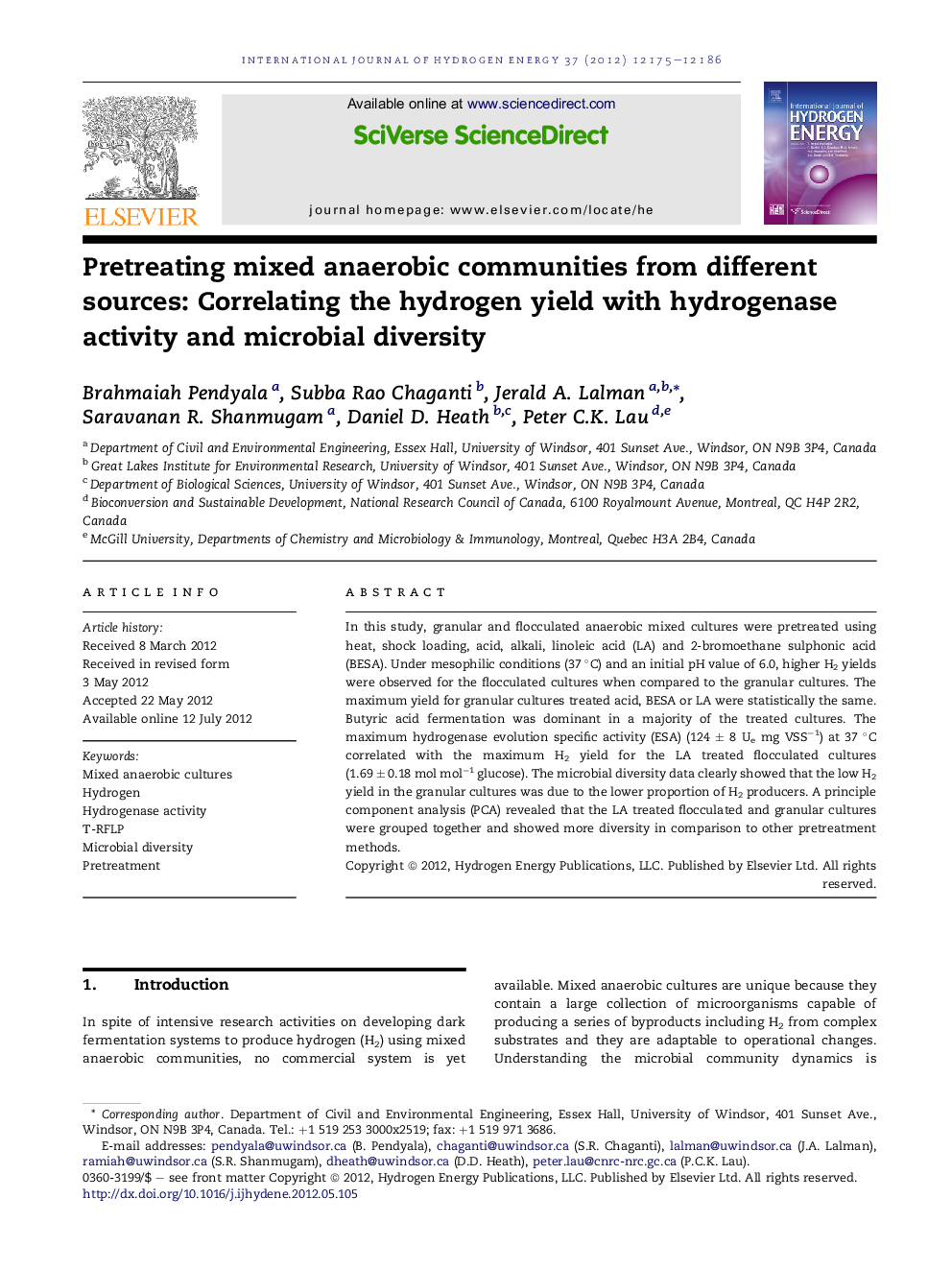| کد مقاله | کد نشریه | سال انتشار | مقاله انگلیسی | نسخه تمام متن |
|---|---|---|---|---|
| 1271052 | 1497552 | 2012 | 12 صفحه PDF | دانلود رایگان |

In this study, granular and flocculated anaerobic mixed cultures were pretreated using heat, shock loading, acid, alkali, linoleic acid (LA) and 2-bromoethane sulphonic acid (BESA). Under mesophilic conditions (37 °C) and an initial pH value of 6.0, higher H2 yields were observed for the flocculated cultures when compared to the granular cultures. The maximum yield for granular cultures treated acid, BESA or LA were statistically the same. Butyric acid fermentation was dominant in a majority of the treated cultures. The maximum hydrogenase evolution specific activity (ESA) (124 ± 8 Ue mg VSS−1) at 37 °C correlated with the maximum H2 yield for the LA treated flocculated cultures (1.69 ± 0.18 mol mol−1 glucose). The microbial diversity data clearly showed that the low H2 yield in the granular cultures was due to the lower proportion of H2 producers. A principle component analysis (PCA) revealed that the LA treated flocculated and granular cultures were grouped together and showed more diversity in comparison to other pretreatment methods.
Figure optionsDownload as PowerPoint slideHighlights
► Flocculated cultures resulted in higher H2 yields compared to granular cultures.
► LCFA treated flocculated and BESA treated granular cultures showed higher H2 yields.
► Butyrate type of fermentation was detected in both flocculated and granular cultures.
► Hydrogenase activities (evolution and uptake) were correlated with the H2 yields.
► Among all the treatment methods examined, LCFA showed higher microbial diversity.
Journal: International Journal of Hydrogen Energy - Volume 37, Issue 17, September 2012, Pages 12175–12186